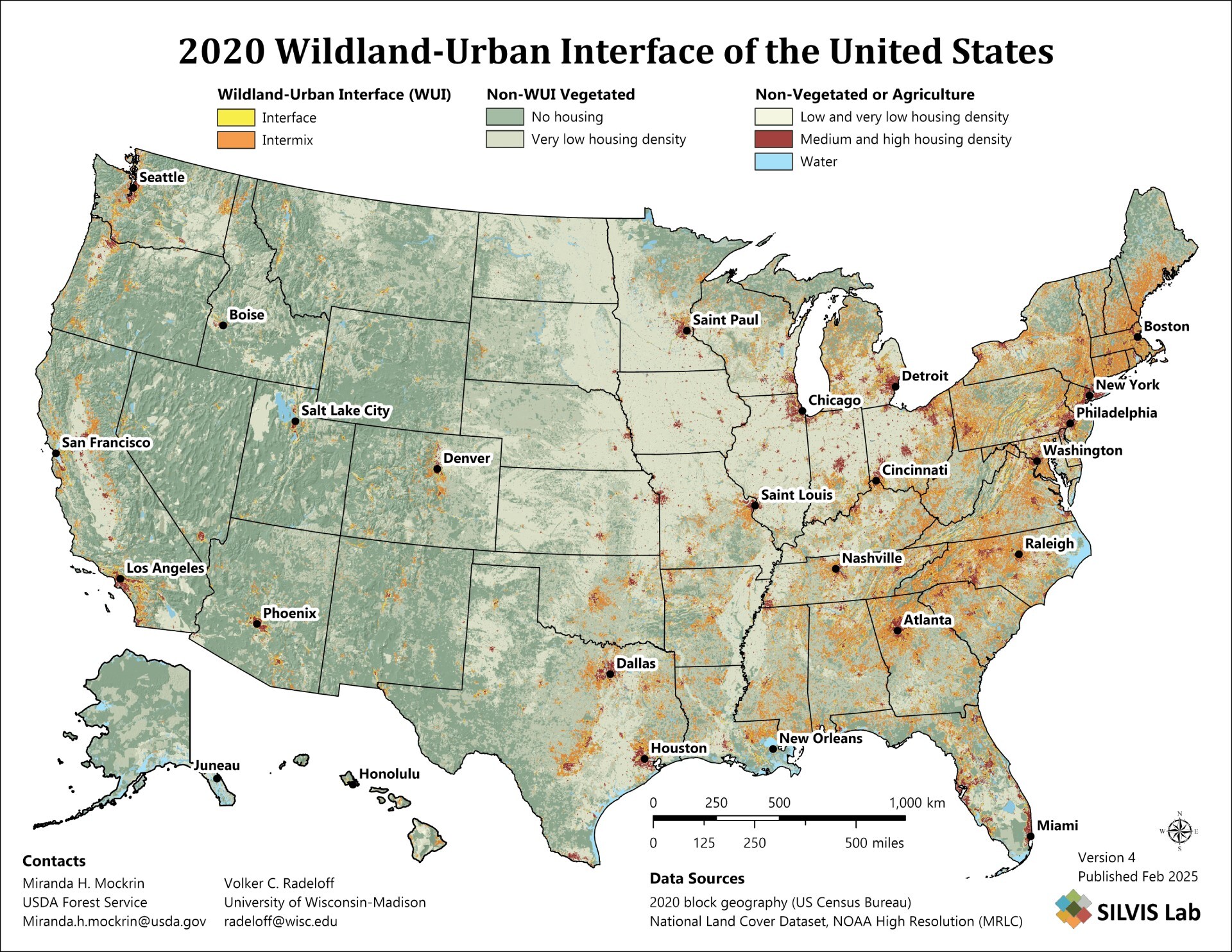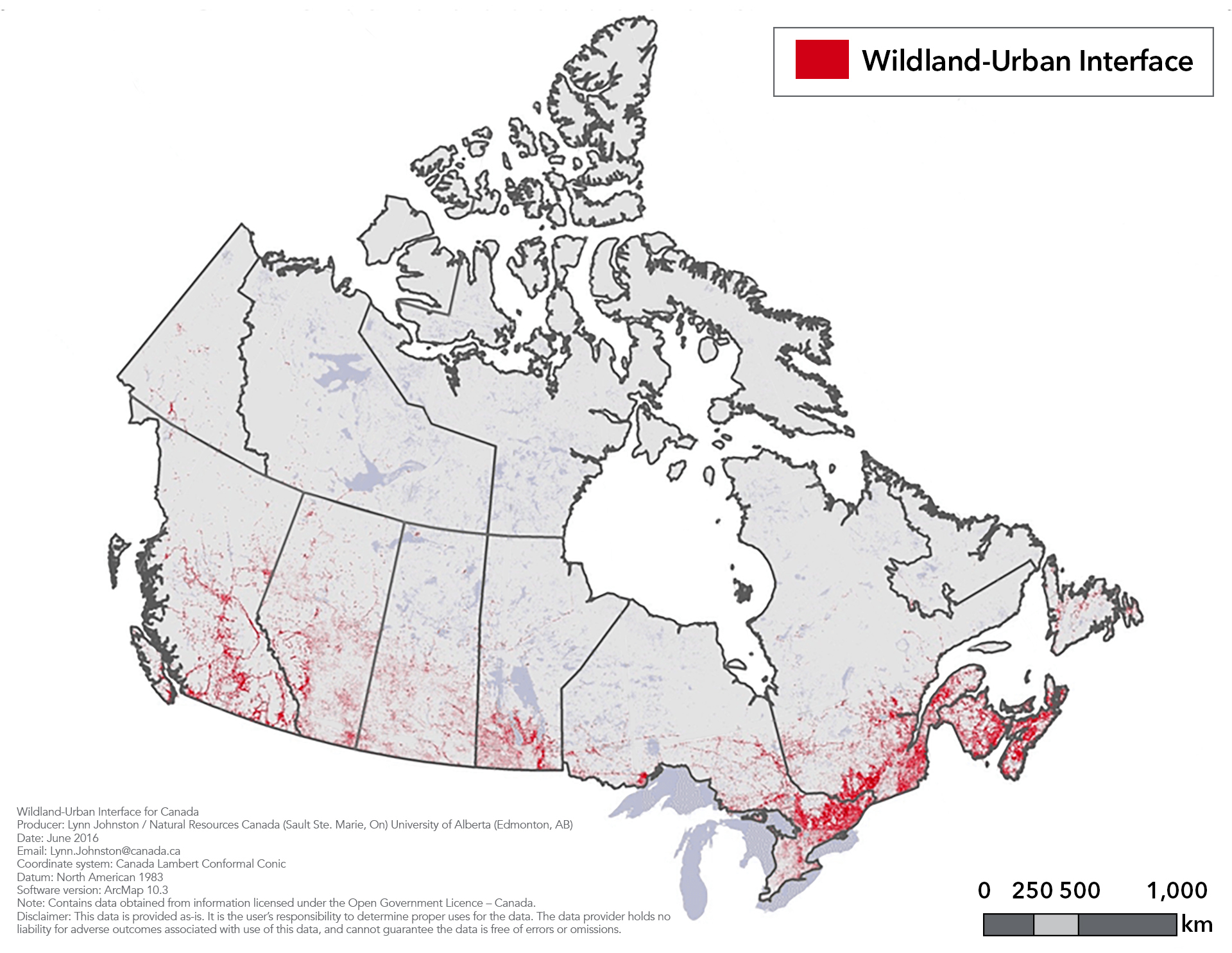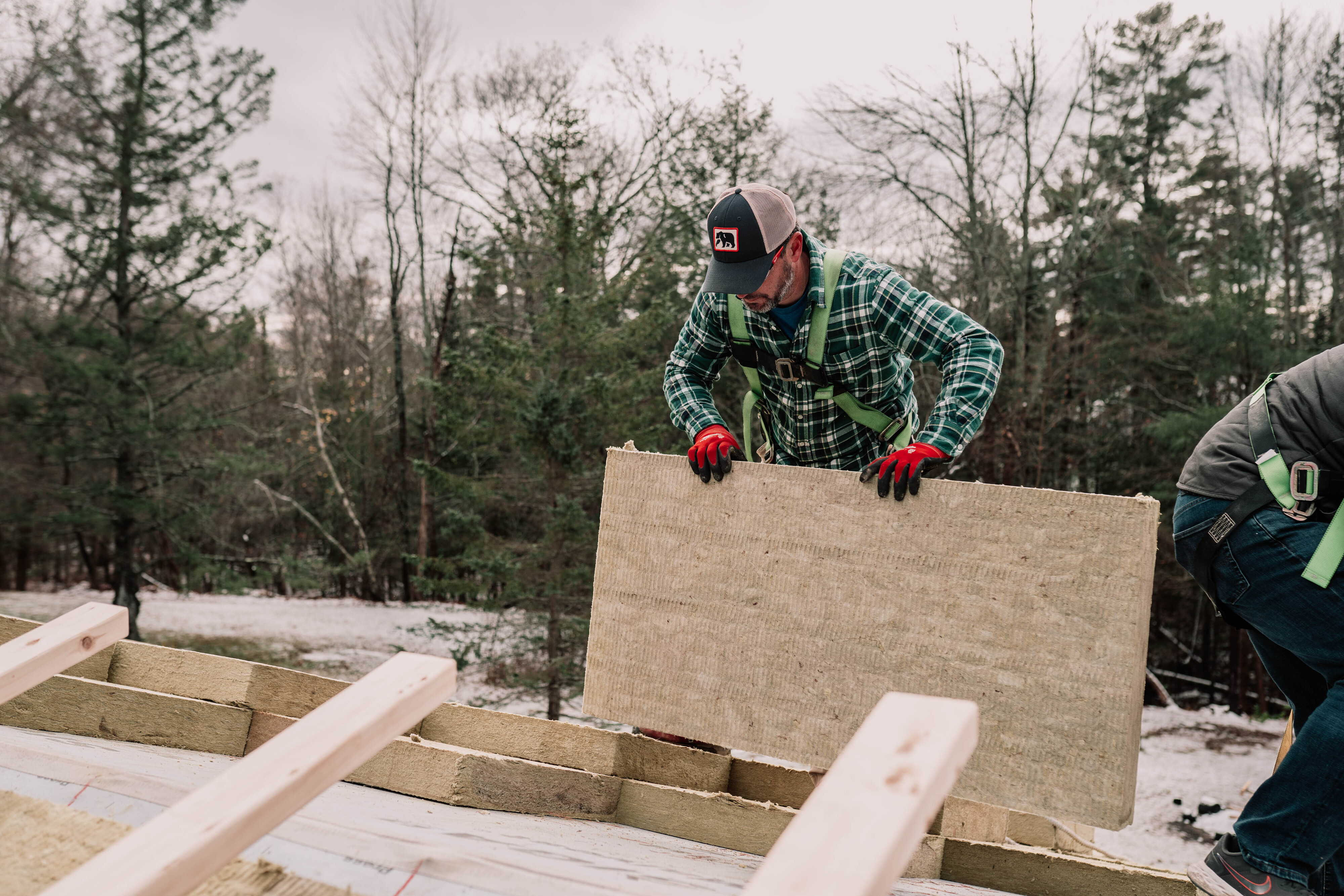Wildfires continue to be a growing threat across North America, causing widespread devastation to homes, businesses, and communities. The Wildland-Urban Interface (WUI), where communities meet wildland vegetation, faces increasing wildfire exposure as climate change drives longer and more intense fire seasons. According to the U.S. Forest Service, the number of houses within wildfire perimeters has doubled since the 1990s.
To reduce wildfire risks, many jurisdictions have implemented stricter building codes to enhance fire resilience. In the U.S. and Canada, the International Wildland-Urban Interface Code (IWUIC) and the National Guide for Wildland-Urban Interface Fires establish fire safety standards, emphasizing home-hardening, fire-resistant landscaping, and community planning to prevent ignition and fire spread.







 WUI map of Canada
WUI map of Canada

